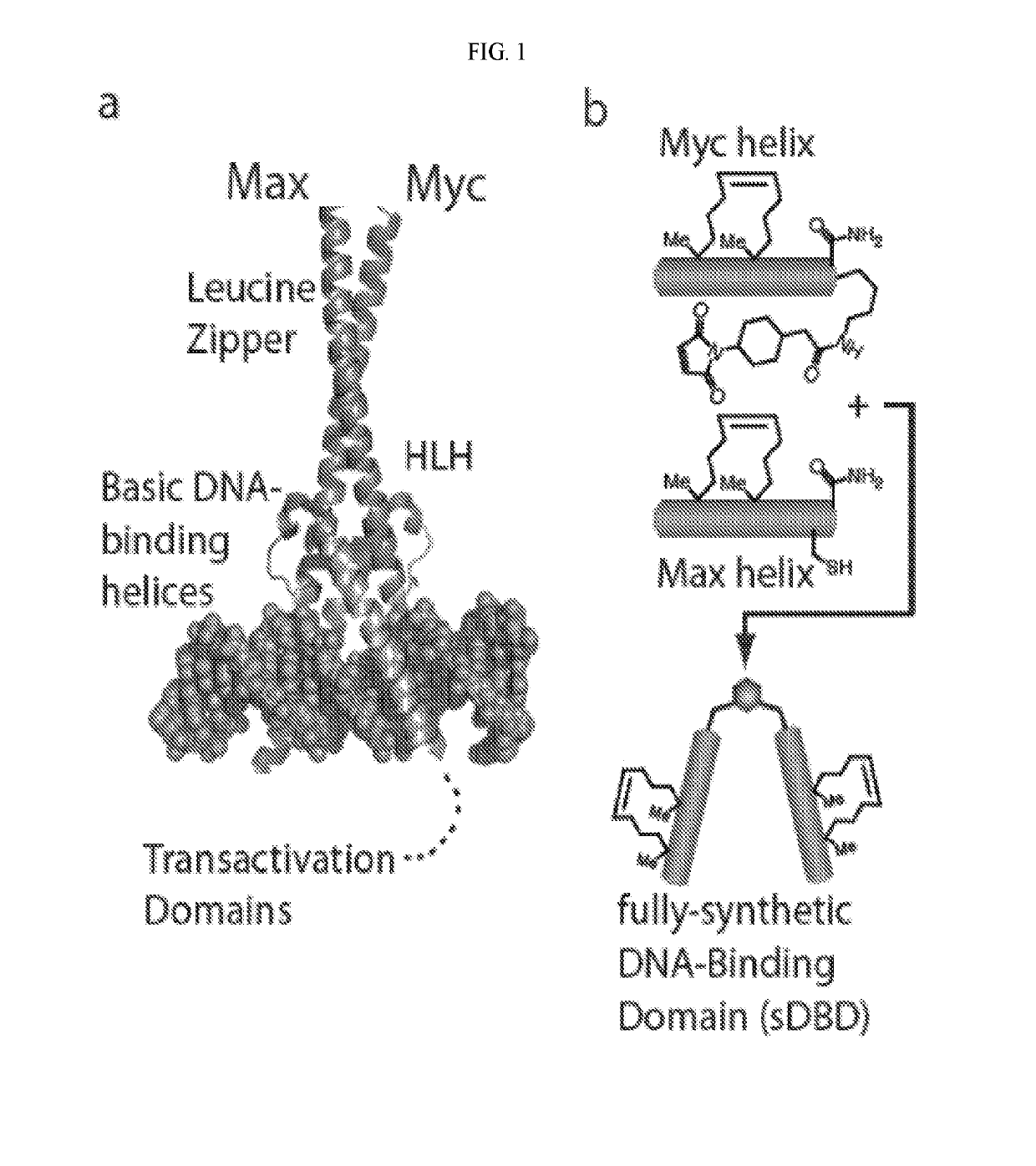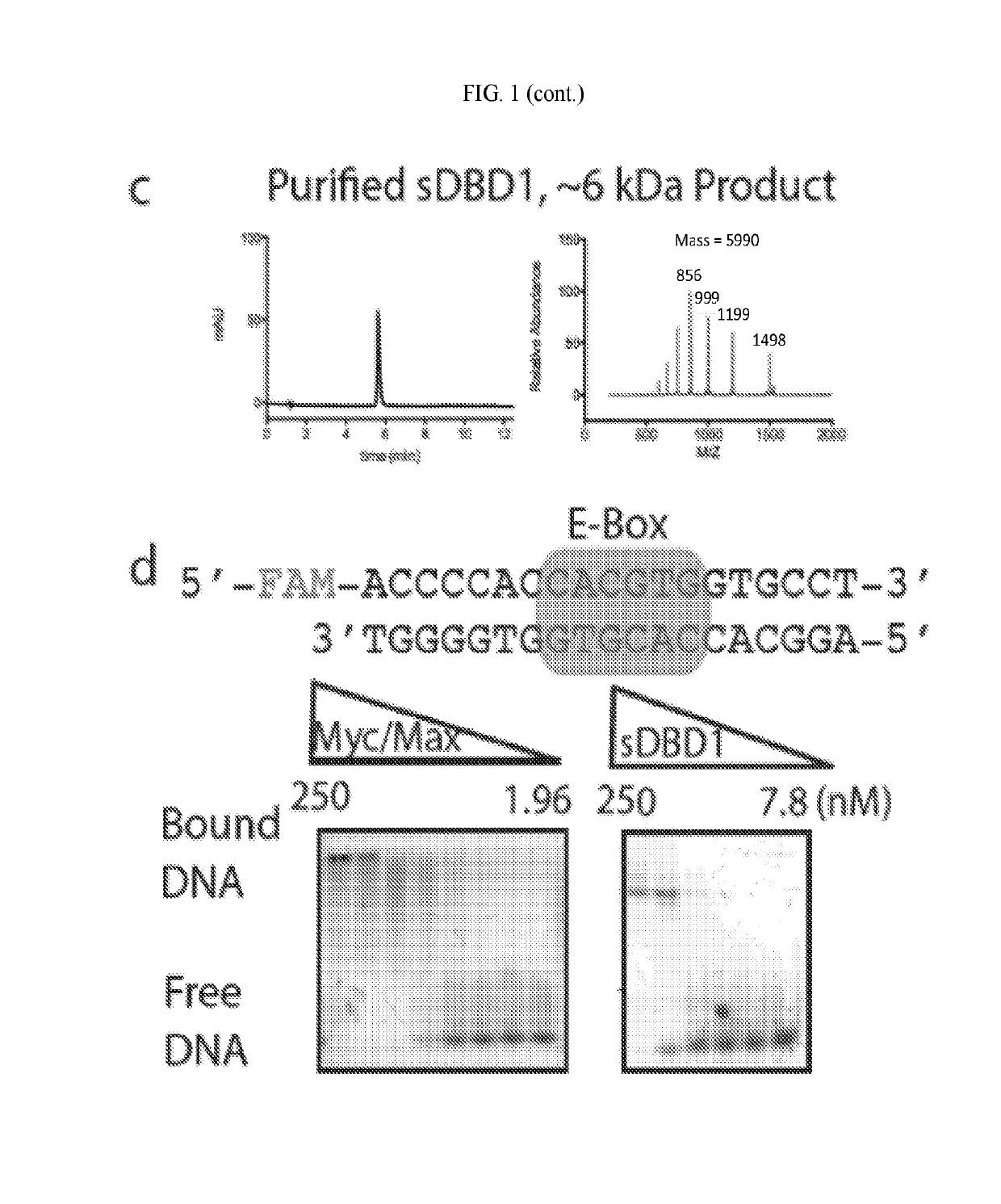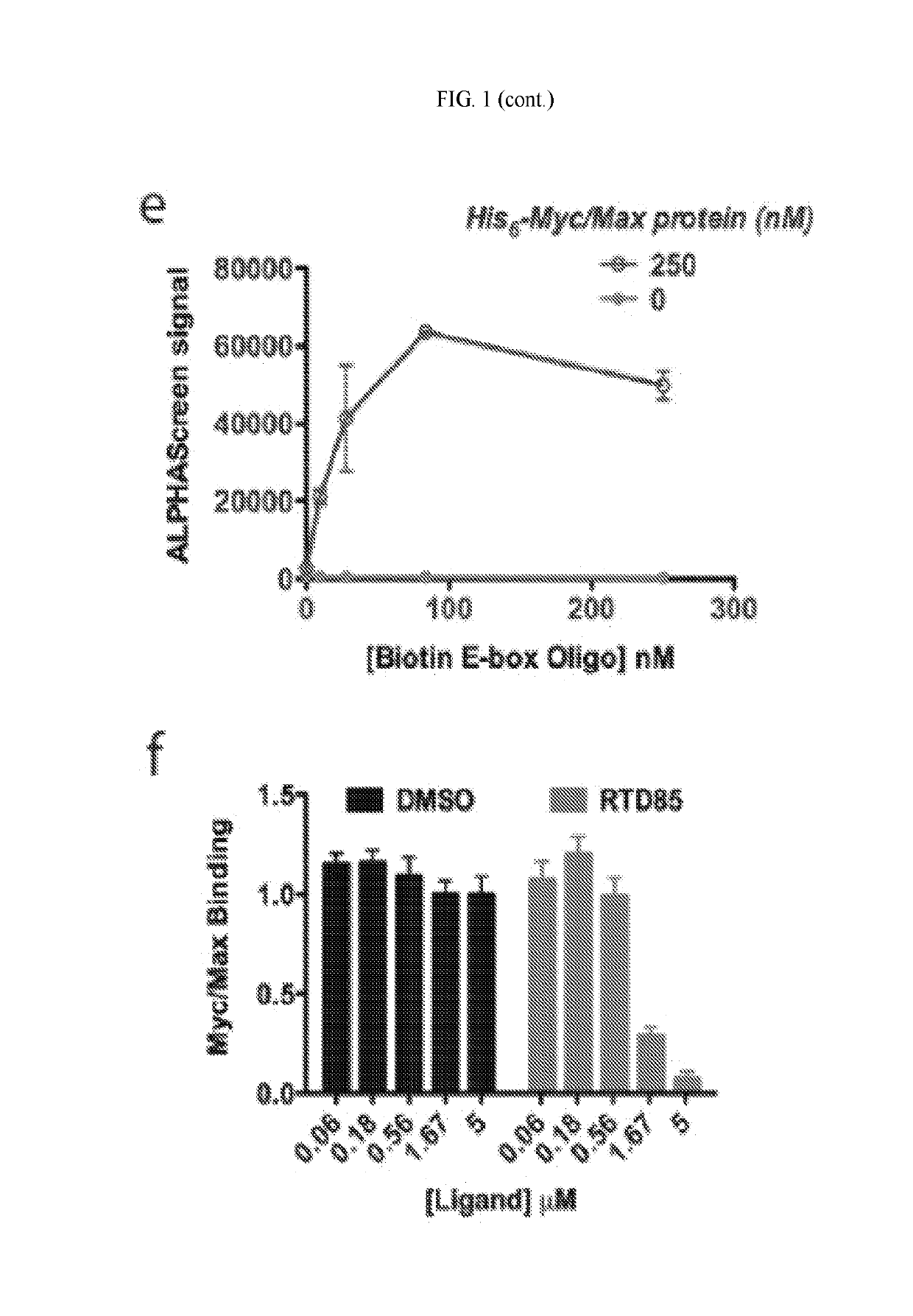Synthetic DNA binding domain peptides and uses thereof
- Summary
- Abstract
- Description
- Claims
- Application Information
AI Technical Summary
Benefits of technology
Problems solved by technology
Method used
Image
Examples
example 1
Design and Synthesis of sDBDs with Improved Specificity and Affinity for E-Box DNA
[0647]The first generation of sDBDs has proven that fully synthetic, multi-domain stapled peptides are capable of binding E-box sequences with affinity and specificity comparable to and competitive with the natural Myc / Max dimer. The position of the hydrocarbon helix-stabilization motif was systematically tested in initial experiments. This parameter revealed that the most potent sDBD exhibited the highest degree of individual helix stabilization relative to their unmodified counterparts (FIG. 2A). Other important structural features, such as the dimerization linker and chemistry, as well as the DNA-binding residues themselves, remained constant.
[0648]An iterative medicinal chemistry effort is undertaken to synthesize focused libraries of sDBDs with optimized: 1) individual helix stabilization; 2) dimerization motif, which will include altering the length and rigidity of the current thiol-maleimide lin...
example 2
Validation of Optimized sDBD E-Box Binding and Inhibition of Myc-Dependent Gene Expression in Cells
[0650]Optimized sDBDs are tested in situ for the ability to specifically bind E-box sites in the genome and subsequently repress Myc-dependent gene expression. First, sDBD binding in the genome is mapped using chromatin immunoprecipitation coupled to DNA sequencing (ChIP-seq) approaches. sDBD analogs harboring a biotin group to facilitate binding site determination in live cells are used. A number of well-characterized human and murine cell lines having a known phenotypic dependence on Myc expression are available, including transformed murine cell lines in which Myc activity can be modulated through induction of a dominant-negative Myc protein (Omomyc)(11), as well as human-derived Burkitt's Lymphoma cell lines, where Myc activation is pathologic. To gain loci-specific information on sDBD targeting, Raji Burkitt's Lymphoma cells are treated with biotinylated sDBDs identified, processe...
example 3
Effects of Direct Myc Inhibition on Oncogenic Phenotypes in Myc-Dependent Burkitt's Lymphoma Cells
[0653]In cancer cells, Myc has been shown to drive expression of diverse genes leading to increased pathogenicity through augmented aerobic glycolysis, protein synthesis, cell cycle progression and proliferation(14). Therefore, sDBDs exhibiting the ability to specifically modulate Myc-regulated genes in expression profiling studies are expected to have profound effects on cellular proliferation and differentiation. Several established Myc-dependent phenotypes are used to identify the functional effects of direct Myc antagonism in Burkitt's lymphoma cells. Myc-driven glycolytic remodeling is explored using metabolomic profiling to monitor cellular glucose uptake, fermentation and respiration in Raji and Ramos cell lines. The effect sDBD treatment or Omomyc expression at time-points associated with inhibition of Myc-driven gene expression on protein synthesis is quantified using pulse-cha...
PUM
| Property | Measurement | Unit |
|---|---|---|
| Composition | aaaaa | aaaaa |
| Therapeutic | aaaaa | aaaaa |
Abstract
Description
Claims
Application Information
 Login to View More
Login to View More - R&D Engineer
- R&D Manager
- IP Professional
- Industry Leading Data Capabilities
- Powerful AI technology
- Patent DNA Extraction
Browse by: Latest US Patents, China's latest patents, Technical Efficacy Thesaurus, Application Domain, Technology Topic, Popular Technical Reports.
© 2024 PatSnap. All rights reserved.Legal|Privacy policy|Modern Slavery Act Transparency Statement|Sitemap|About US| Contact US: help@patsnap.com










